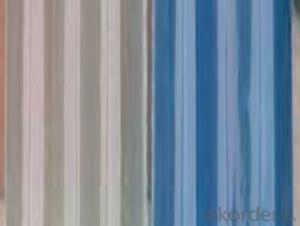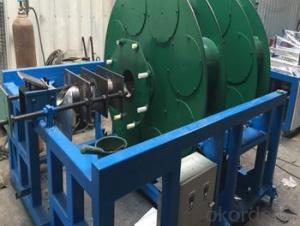FRP pultruded grating with Safe and anti-slippery and best quality
- Loading Port:
- Tianjin
- Payment Terms:
- TT OR LC
- Min Order Qty:
- 20000 m.t.
- Supply Capability:
- 300000 m.t./month
OKorder Service Pledge
OKorder Financial Service
You Might Also Like
Item specifice
PRODUCT DESCRIPTION
Pultruded grating is made by a particular assembly process, which using “I” shape as its main load-bearing and special rod to go through the bearing bar. Pultruded grating include the standard grating and the custom grating, the custom grating can be designed to meet customer’s requirement or special using condition by changing the shape, size and space of the bearing bars, the surface can be covered with lozenge panel, grit panel, or added the anti-slippery sand directly.
FRP pultruded grating has the most characteristics of molded grating, but it has its distinct advantages, it has very high fiberglass content in the loading direction, so it has very high load capability, it has more superiority when used at wide span, so that the basic support will be decreased and the project cost will be reduced accordingly.
SPECIFICATION
The standard space between two crossbars is 6 inch or 12 inch.
Thickness (mm) | Bar width (mm) | Open space (mm) | Open rate (%) | Approx weight (kg/m |
25.4 | 15.2 | 22.8 | 60 | 13.2 |
25.4 | 15.2 | 15.2 | 50 | 15.9 |
25.4 | 15.2 | 10.1 | 40 | 18.5 |
25.4 | 40 | 10.8 | 21 | 14.5 |
38.1 | 15.2 | 22.8 | 60 | 15.8 |
38.1 | 15.2 | 15.2 | 50 | 19.1 |
38.1 | 15.2 | 10.1 | 40 | 22.4 |
50.8 | 25.4 | 25.4 | 50 | 16.6 |
50.8 | 25.4 | 12.7 | 33 | 21.1 |
CHOICE FOR PULTRUDED GRATING
Resin: GP resin, ISO resin, VE resin, Phenol resin
Color choice: Yellow, gray, green, custom color
Surface choice: Groove surface, grit surface, lozenge cover surface
FEATURES
a. Anti-corrosion and anti-rust
b. Light weight and high strength
c. Anti-flammable
d. Anti- fatigue
e. Safe and anti-slippery
f. Anti-ageing
g. Easy of maintenance
h. Excellent electromagnetism property
i. Good economic benefit
FIELDS SERVED
Sewage treatment,
water supply and drainage,
chemical industry,
oil industry,
power engineering,
pulp and paper,
construction engineering,
spinning, marine engineering.
APPLICATION
Operation terrace,
stair walkway,
ground floor,
trench cover,
sidewalk,
foot bridge,
equipment safety fence,
scaffold.
COMPANT DESCRIPTION
CNBM,China National Building Materials Group is a state-owned enterprise in charge of administrative affairs in china building materials industry. Established in 1984, CNBM is a large group corporation of building materials with total assets of 25 billion RMB and a total staff of 30,000.CNBM now owns 200 subordinating firms of solely owned and joint-venture companies.
CNBM International Corporation is one subsidiary of CNBM, we focus on offering good-quality products,professional service and complete solution to our customers. Strong delivery capacity, advanced technology& management, strong financing capability and excellent after-sale service are our advantages in sharing international market.
FAQ
Q1.What's your sample policy?
A:We can supply the sample if we have ready parts in stock, but the customers have to pay the courier cost.
Q2.Can you produce according to the samples?
A: Yes, we can produce or modify the products according to your request.
Q3.How do you deliver the goods to my country?
A:We can provide international express, such as DHL, EMS, UPS, FedEx, etc. We select air freight and sea freight upon your requests. Quotations if without mentioning the shipping costs are shipping fee excluded.
Q4.How much does it cost to ship to my country?
A:When you goanna to place an order, please contact us, because different country has different freight.
Q5.How to get the catalogue?
A:please contact us and tell us what you are looking for
PICTURES
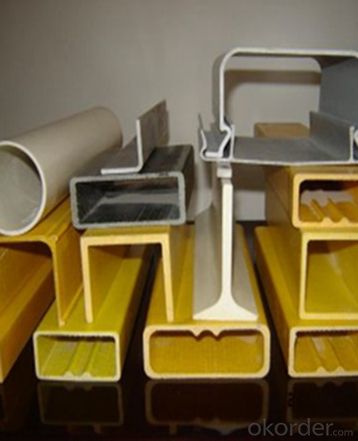
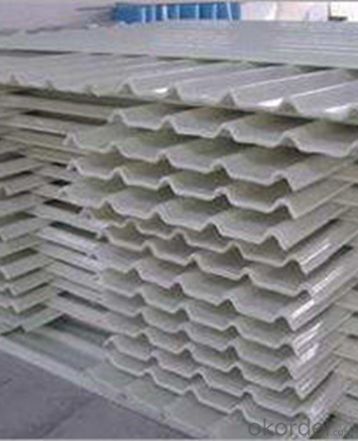
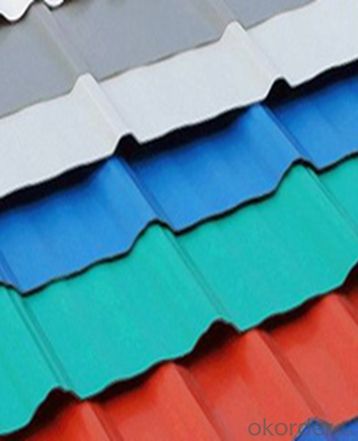
- Q:How do FRP pultrusion profiles perform in extreme temperatures?
- FRP pultrusion profiles generally perform well in extreme temperatures due to their inherent thermal stability and resistance to temperature variations. The material's composition, typically made of reinforced fibers and polymer resin, allows it to maintain its structural integrity and mechanical properties across a wide range of temperatures. This makes FRP pultrusion profiles suitable for use in both extremely hot and extremely cold environments, as they are less prone to expansion, contraction, or degradation compared to other materials.
- Q:How do FRP pultrusion profiles perform in high-humidity environments?
- FRP pultrusion profiles have a reputation for their exceptional performance in environments with high levels of humidity. The combination of reinforced fibers and polymer matrix in FRP profiles gives them the ability to withstand the detrimental effects of moisture and humidity. One of the main advantages of FRP materials is their natural resistance to corrosion, which is particularly important in high-humidity environments where moisture levels are significantly higher. Unlike traditional materials like steel or wood, FRP pultrusion profiles don't rust, rot, or decay when exposed to moisture. This makes them ideal for various applications that involve constant exposure to humidity, such as coastal areas or industrial settings. Moreover, the polymer matrix used in FRP profiles acts as a barrier against moisture absorption. This prevents the profiles from expanding, warping, or cracking, even under extreme humidity conditions. The high-strength fibers embedded in the polymer matrix provide additional reinforcement, ensuring the profiles maintain their structural integrity and dimensional stability over time. Furthermore, FRP pultrusion profiles are also resistant to the growth of mold and mildew, which are commonly associated with high-humidity environments. This feature is highly advantageous as it reduces the need for frequent maintenance and cleaning, making FRP profiles a cost-effective and low-maintenance solution. In conclusion, FRP pultrusion profiles demonstrate exceptional performance in environments with high levels of humidity. Their resistance to corrosion, moisture absorption, and mold growth make them a reliable choice for applications that require durability and longevity in such conditions.
- Q:Are FRP pultrusion profiles resistant to electromagnetic interference?
- Yes, FRP pultrusion profiles are generally resistant to electromagnetic interference. The non-conductive nature of the fiberglass reinforced polymer (FRP) material provides insulation against electromagnetic fields, making them less susceptible to interference. However, the specific level of resistance may depend on the design and composition of the FRP profiles.
- Q:Are FRP pultrusion profiles resistant to impact and vibration?
- FRP pultrusion profiles possess a high level of resistance to impact and vibration, thanks to their composition and manufacturing process. These profiles are inherently durable and strong due to the combination of resins and fibers used. The fibers, commonly glass or carbon, contribute to their excellent tensile strength, while the resin matrix adds toughness and impact resistance. The unique composition of FRP pultrusion profiles allows them to absorb energy effectively, enabling them to withstand impacts without significant deformation or damage. This quality makes them well-suited for applications that necessitate impact resistance, such as construction, transportation, and infrastructure projects. Furthermore, FRP pultrusion profiles exhibit exceptional vibration resistance. The composite material's inherent damping characteristics help disperse and dampen vibrations, minimizing the risk of structural fatigue and increasing the profiles' lifespan. This makes them ideal for use in environments with heightened vibration levels, including industrial machinery, bridges, and marine structures. Nevertheless, it is crucial to consider that the impact and vibration resistance of FRP pultrusion profiles may vary based on factors such as resin type, reinforcement fibers, and profile design. Thus, it is advisable to consult the manufacturer or supplier to ensure that the chosen FRP pultrusion profiles fulfill the specific impact and vibration resistance requirements of the intended application.
- Q:How are FRP pultrusion profiles manufactured?
- FRP pultrusion profiles are manufactured through a highly controlled and precise process. The manufacturing process involves several steps. Firstly, the raw materials are selected, which usually include reinforcing fibers such as fiberglass, carbon fiber, or aramid, and a thermosetting resin matrix. These materials are chosen based on the desired mechanical properties of the final product. Next, the reinforcing fibers are impregnated with the resin matrix. This is typically done by passing the fibers through a bath of resin or using a resin injection system, ensuring that the fibers are completely saturated and coated. Once the impregnation is complete, the fibers are carefully pulled through a heated steel die. The die is designed to shape the pultrusion profile and provide the desired cross-sectional shape. The die is heated to a temperature that activates the resin's curing process, allowing it to harden and bond the fibers together. As the fibers pass through the die, they are continuously pulled by a set of pulling rollers or a gripper system. This pulling force helps maintain the profile's shape and dimensions and ensures a consistent and uniform product. After exiting the die, the profile enters a cooling zone, where it is cooled down using either air or water. This rapid cooling helps set the resin and stabilize the shape of the profile. Finally, the cured and cooled profile is cut to the desired length, often using automated cutting systems. Additional finishing processes like surface treatment, sanding, or painting may be applied to meet specific requirements or enhance the profile's aesthetics. Overall, the manufacturing process for FRP pultrusion profiles combines the impregnation of reinforcing fibers with resin, the shaping of the profile through a heated die, and the curing and cooling steps. This process allows for the production of high-strength, lightweight, and corrosion-resistant profiles that find applications in various industries, including construction, aerospace, automotive, and electrical.
- Q:Are FRP pultrusion profiles resistant to saltwater corrosion?
- Yes, FRP pultrusion profiles are highly resistant to saltwater corrosion. The combination of their fiberglass reinforcement and the corrosion-resistant resin matrix used in their manufacturing make them ideal for applications in marine environments. They are capable of withstanding prolonged exposure to saltwater without degradation or loss of structural integrity.
- Q:Can FRP pultrusion profiles be used in the construction of playground equipment?
- FRP pultrusion profiles are indeed applicable in the construction of playground equipment. Renowned for their exceptional strength-to-weight ratio, resistance to corrosion, and long-lasting quality, these profiles prove to be ideal for outdoor applications like playground equipment. The versatility of these profiles allows for the creation of various structures such as slides, climbing frames, and play structures. Moreover, the ability to mold FRP pultrusion profiles into different shapes and sizes provides flexibility in design and customization options for playground equipment. An added advantage is that FRP materials are non-conductive, ensuring the safety of children. All in all, the numerous benefits offered by FRP pultrusion profiles make them an appropriate choice for constructing playground equipment.
- Q:Are FRP pultrusion profiles resistant to alkalis?
- Yes, FRP (Fiber Reinforced Polymer) pultrusion profiles are generally resistant to alkalis. This is due to the fact that FRP composites are non-metallic materials that are composed of a polymer matrix reinforced with fibers, such as glass or carbon. The polymer matrix in FRP pultrusion profiles provides excellent resistance to alkalis, making them suitable for applications in environments where alkalis are present, such as chemical processing plants, wastewater treatment facilities, or marine structures. However, the specific resistance of FRP pultrusion profiles to alkalis may vary depending on the type of polymer resin used and the concentration and temperature of the alkali solution. Therefore, it is important to consult the manufacturer's specifications or conduct specific tests to ensure the compatibility of FRP pultrusion profiles with the intended alkali environment.
- Q:Are FRP pultrusion profiles resistant to wear or abrasion?
- Yes, FRP (Fiber Reinforced Plastic) pultrusion profiles are highly resistant to wear and abrasion. The combination of the reinforcing fibers, typically glass or carbon, and the plastic resin matrix creates a material that is incredibly durable and can withstand heavy usage. The pultrusion process also ensures a homogeneous structure with fibers evenly distributed throughout the profile, further enhancing its resistance to wear and abrasion. Additionally, FRP pultrusion profiles can be engineered with specific additives or surface treatments to further enhance their resistance to wear and abrasion, making them suitable for a wide range of applications in various industries, such as construction, transportation, and marine.
- Q:Can FRP pultrusion profiles be used in the construction of train or subway platforms?
- Yes, FRP pultrusion profiles can be used in the construction of train or subway platforms. FRP (Fiber Reinforced Polymer) offers excellent strength, durability, and corrosion resistance, making it suitable for high-traffic areas like train or subway platforms. Additionally, FRP pultrusion profiles can be customized to meet specific design requirements, making them a versatile choice for platform construction.
1. Manufacturer Overview |
|
|---|---|
| Location | |
| Year Established | |
| Annual Output Value | |
| Main Markets | |
| Company Certifications | |
2. Manufacturer Certificates |
|
|---|---|
| a) Certification Name | |
| Range | |
| Reference | |
| Validity Period | |
3. Manufacturer Capability |
|
|---|---|
| a)Trade Capacity | |
| Nearest Port | |
| Export Percentage | |
| No.of Employees in Trade Department | |
| Language Spoken: | |
| b)Factory Information | |
| Factory Size: | |
| No. of Production Lines | |
| Contract Manufacturing | |
| Product Price Range | |
Send your message to us
FRP pultruded grating with Safe and anti-slippery and best quality
- Loading Port:
- Tianjin
- Payment Terms:
- TT OR LC
- Min Order Qty:
- 20000 m.t.
- Supply Capability:
- 300000 m.t./month
OKorder Service Pledge
OKorder Financial Service
Similar products
New products
Hot products
Hot Searches
Related keywords

